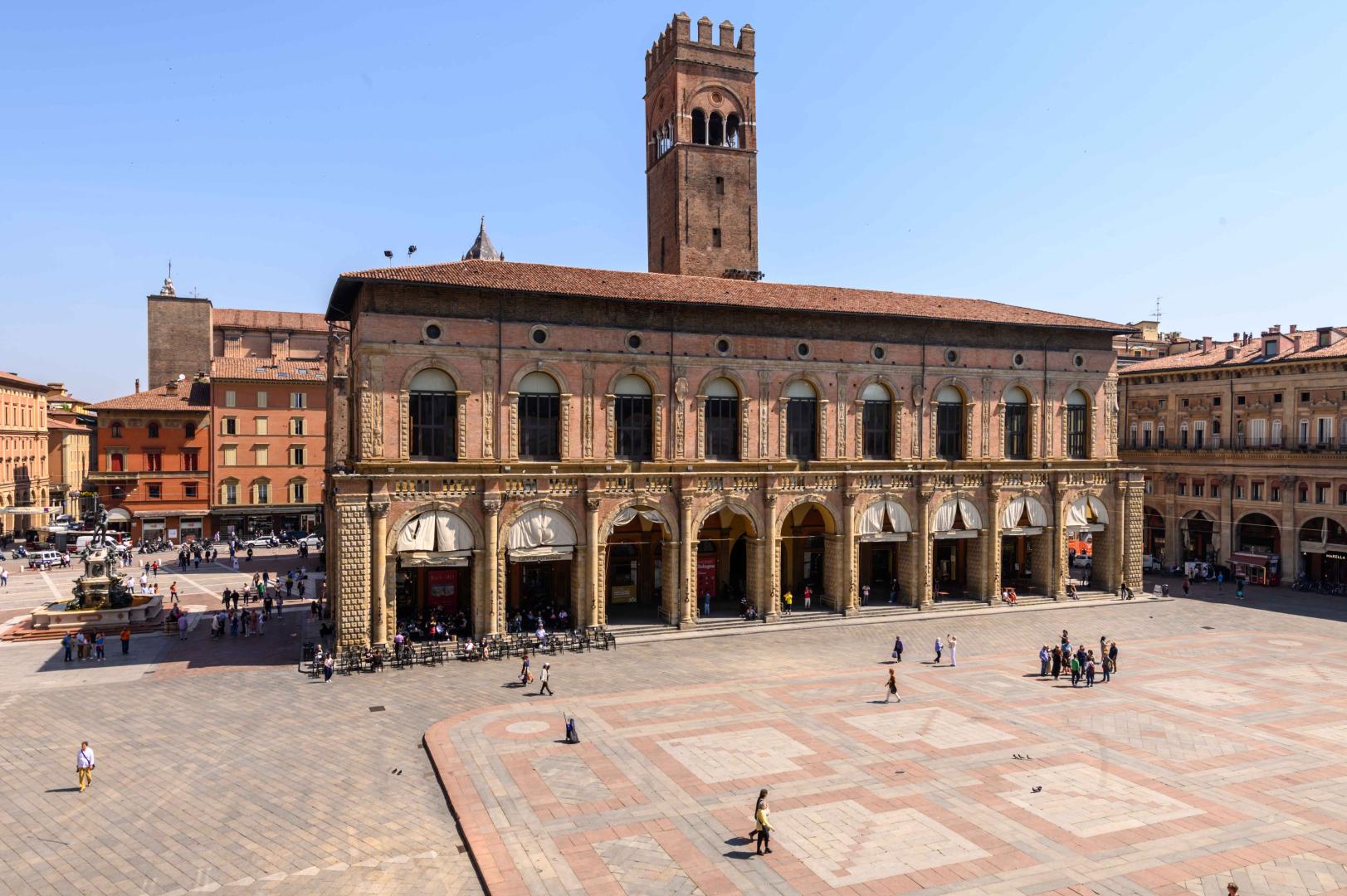The events of the 20th century
In 1909 Alfonso Rubbiani proposed a restoration of the façade which he envisioned with crenellations and the restoration of double-lancet or cross windows. The proposal, promoted by the Historic and Artistic Bologna Committee, was supported by real models mounted in the building. The reaction, however, of intellectuals and citizens was very disappointing and everything remained as we still see it today. Proof of the diminishing fame of the notary-restorer was the choice of the painters who frescoed the main hall of the Palazzo: in fact, the call for tenders launched in 1907 was not awarded to the guild of artists enamoured of the Liberty style, but to Adolfo de Carolis (with Alfredo Brizzi), with I Fasti della Citta di Bologna (1911-1928). He was an artist of 16th century classicist leanings and inclined towards the recovery of Michelangelo's art. His collaborators went on to finish the work after his death in 1928. Every section of the hall was decorated, but at present only the walls are frescoed, while the paintings in the vault were removed at the end of the 1960s for urgent restoration of the masonry works.
Sources
F. Ceccarelli, D. Pascale Guidotti Magnani, Il portico bolognese. Storia, architettura, città, Bologna, Bononia University Press, 2021, p. 104.
Renato Barilli, Adolfo De Carolis, in Il Liberty a Bologna e nell’Emilia Romagna, catalogo della mostra, Bologna, Grafis, 1977, pp. 386 e ss.
Photo by Giorgio Bianchi

